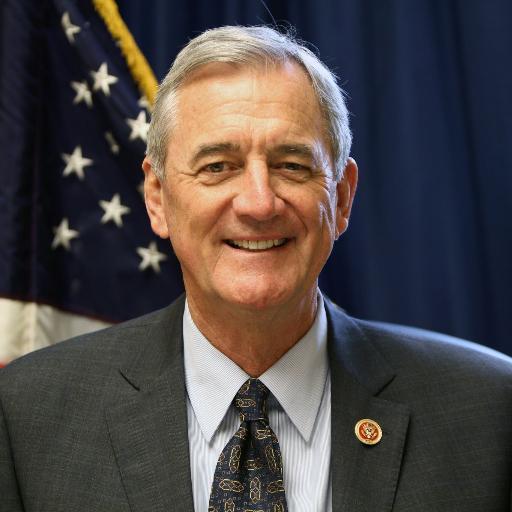Congressman Rick Nolan of Minnesota supporting Unarmed Civilian Protection
July 23, 2015
 Congressman Rick Nolan of Minnesota yesterday called for the US government to provide more support for unarmed civilian protection (UCP) through initiatives at the State Department and USAID as well as in positions at the UN.
Congressman Rick Nolan of Minnesota yesterday called for the US government to provide more support for unarmed civilian protection (UCP) through initiatives at the State Department and USAID as well as in positions at the UN.
"When confronted with such atrocities (as in Syria and South Sudan), our typical response is to send in the bombers and drones, ship military equipment, train ‘‘the good guys,’’ or even put our own troops on the ground. By doing these things, we create a state of on-going war. Is it any wonder the result is more violence, rather than less?”
Read the full speech below or directly in the Congressional Record.
(Published July 23, 2015)
CONGRESSIONAL RECORD —
Extensions of Remarks
E1108
July 22, 2015
EXPANDING UNARMED APPROACHES TO PROTECT CIVILIANS
HON. RICHARD M. NOLAN OF MINNESOTA IN THE HOUSE OF REPRESENTATIVES
Wednesday, July 22, 2015
Mr. NOLAN. Mr. Speaker, we are besieged daily with news of intensifying brutal attacks on innocent civilians in South Sudan, Syria, Ukraine, and many more places throughout the world. Women and children are increasingly being targeted. Anthony Lake, the executive director of UNICEF, recently wrote about South Sudan: ‘‘The details of the worsening violence against children are unspeakable, but we must speak of them . . . Survivors report that boys have been castrated and left to bleed to death . . . Girls as young as 8 have been gang raped and murdered . . . Children have been tied together before their attackers slit their throats . . . Others have been thrown into burning buildings . . . Children are also being aggressively recruited into armed groups of both sides on an alarming scale.’’ When confronted with such atrocities, our typical response is to send in the bombers and drones, ship military equipment, train ‘‘the good guys,’’ or even put our own troops on the ground. By doing these things, we create a state of on-going war. Is it any wonder the result is more violence, rather than less? The UN High Commissioner on Refugees reported last month that 59.5 million individuals have been forcibly displaced worldwide. This is the largest number since UNHCR began keeping records. UNHCR’s Annual Report tells us that every day last year, an average of 42,500 people had to flee their homes, a four-fold increase in just four years. That’s like everybody in a city the size of Duluth, the largest city in my district, fleeing from their homes every other day. But there are effective alternatives that are protecting civilians and deterring violence in some of the most brutal war zones around the world. You probably haven’t heard about them because, unlike terrorists, these nonviolent peacekeepers seldom make the headlines. During this time of crisis, it is imperative that we examine new and less conventional methodologies as we try to fulfill our responsibility to protect our fellow civilians as best we can. One such approach is unarmed civilian protection (UCP), pioneered by Nonviolent Peaceforce, an organization that originated in Minnesota. UCP provides unarmed, specially trained civilians who are recruited from many different countries to live and work with local civil society in areas of violent conflict. Currently there are more than a dozen non-governmental organizations DIRECTLY protecting civilians, using only nonviolent methods, in places like South Sudan, Colombia, Guatemala, Palestine and the Philippines. Their approaches are strategic, thoughtful, and tailored for each specific situation. These unarmed civilian protectors model peace by practicing it. For example in South Sudan, displaced women leaving the Protection of Civilian areas to gather firewood and water face rape by soldiers lurking at the edge of the sites. The women routinely have to make excruciating choices between their family’s sustenance and their personal safety. UCP workers found that when two or more trained, unarmed civilian protectors accompany 20–30 women, the soldiers look the other way. No woman has been attacked when accompanied by an unarmed civilian protector. Imagine if we had 10,000 unarmed civilians protecting civilians in South Sudan, instead of the 150 that Nonviolent Peaceforce struggles to fund. We can afford them, because these unarmed civilian protectors cost a fraction of the cost of a soldier. In their report released on June 16, the UN High Level Peace Operations Review Panel recognized UCP as a key reform for protecting civilians under threat of violent conflict. The Panel Chair, Nobel Laureate Jose Ramos Horta, stated, ‘‘The Panel reviewed the excellent input by Nonviolent Peaceforce, which shared with us its positive experience in protecting civilians in war-torn situations. In our Report, we recommend that the UN engage more of those brave people working in the field, unarmed, to protect civilians’’. Crisis demands innovation. We need to respond to violence with methods that are effective and efficient, not just usual and conventional. We need methods that move us towards peace, not those that engulf us in further violence. The United States must incorporate UCP as a key instrument in transforming violent conflict, and in protecting civilians, through our initiatives at the State Department and USAID as well as our positions at the United Nations.
